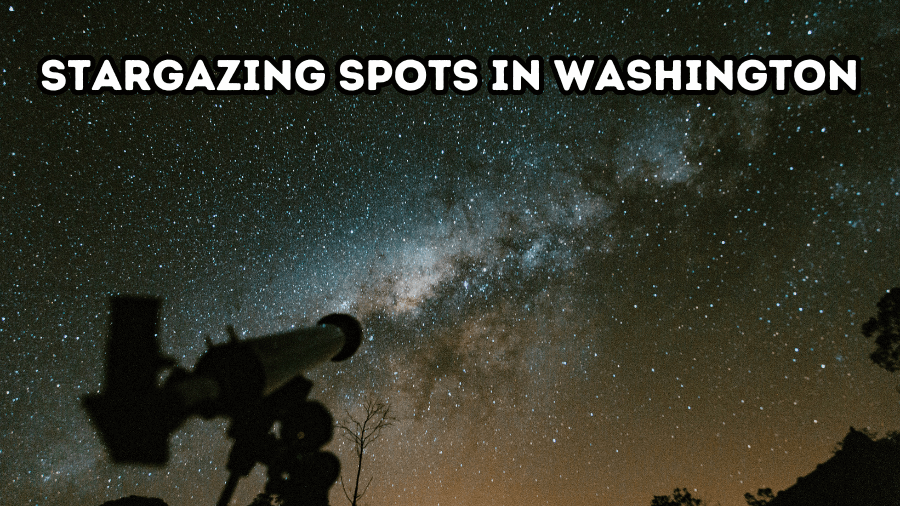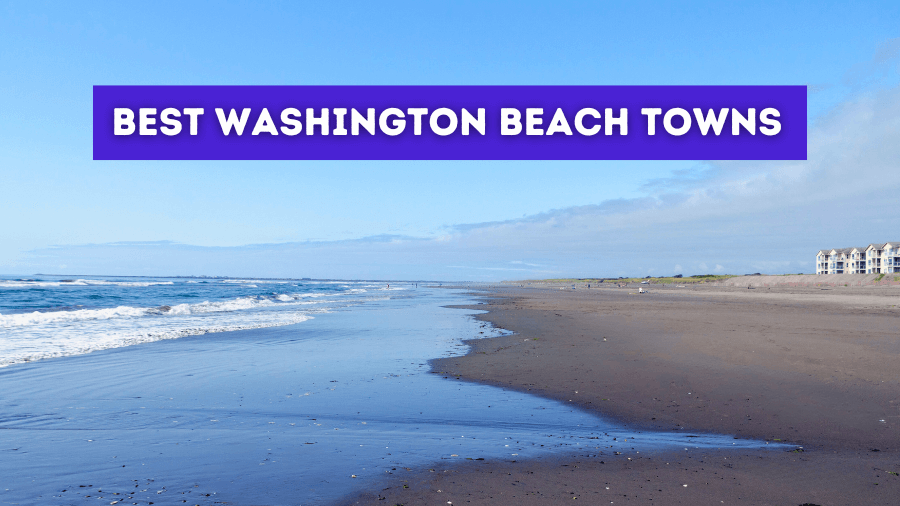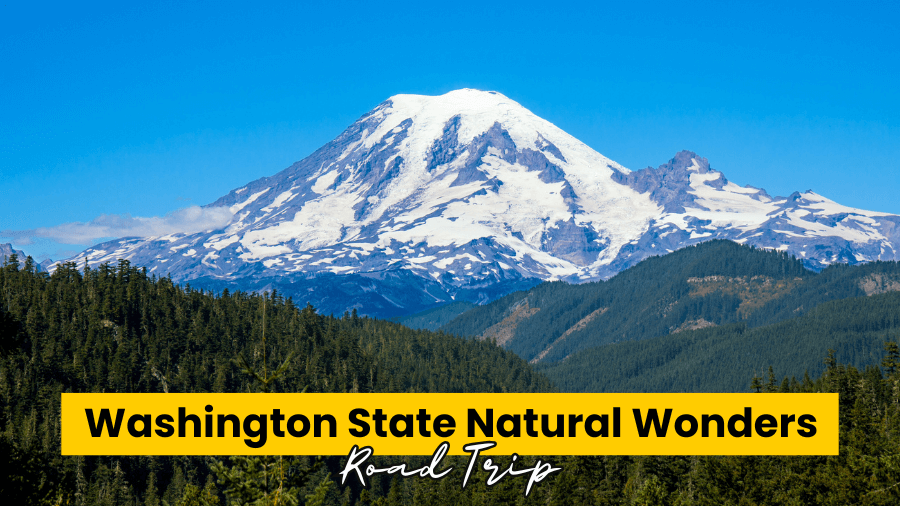If you’ve ever looked up at the night sky and thought, “Whoa, I wish I could see more stars,” then Washington’s got you covered.
This state is packed with dark-sky spots where you can see planets, constellations, shooting stars—even galaxies, if you know where to look.

From mountain tops to desert cliffs to quiet beaches, there are some seriously amazing places where the stars shine brighter than you’ve ever seen.
Whether you’re bringing a telescope or just lying back with a blanket and snacks, these 9 stargazing spots are totally worth staying up late for.
1. Goldendale Observatory State Park
Goldendale Observatory State Park is a hilltop spot in southern Washington, just outside the small town of Goldendale, and it’s one of the best places in the state to see the stars.
It’s home to one of the biggest public telescopes in the U.S., and you can use it during super cool free programs that run all year long on certain days of the week.
(Just remember to reserve your spot.)
On clear nights, you’ll spot planets, star clusters, and galaxies while learning fun space facts from super enthusiastic staff who seriously love astronomy.
The park sits at about 2,100 feet above sea level, so you get amazing views of the night sky without all the city light pollution.
2. Steptoe Butte State Park
Next up is Steptoe Butte State Park, which is basically a giant hill popping out of the rolling farmland in eastern Washington’s Palouse region—and yes, the views are wild.
You can drive all the way to the top (no hiking required!) where the 3,612-foot summit gives you a full 360-degree view of patchwork fields that look like a painting, especially at sunset.
At night, this remote spot turns into a quiet, open-air stargazing spot with hardly any lights around to mess up the view.
Fun fact: The quartzite rock that makes up Steptoe Butte is over 400 million years old, so you’ll be stargazing from the top of ancient land that’s older than the dinosaurs!
3. Sun Lakes–Dry Falls State Park
If you want your stargazing with a bit prehistoric drama, Sun Lakes–Dry Falls State Park totally delivers.
This place used to be the site of the biggest waterfall ever known on Earth (Dry Falls), and now it’s a massive canyon with dark skies and super cool volcanic cliffs.
You can set up your telescope near the visitors center or camp overnight by the lake, where the stars pop like crazy thanks to the dry desert air.
It’s like watching the cosmos from inside a giant ancient amphitheater.
4. Palouse Falls State Park

Palouse Falls State Park feels like you’re stargazing on the edge of the world—literally.
The park’s main star (besides the actual stars) is a roaring 198-foot waterfall that crashes into a deep basalt canyon, and at night, the sky above it lights up with constellations.
There’s a small campground which is perfect for lying back and spotting shooting stars with the sound of rushing water in the background.
5. Wenas Wildlife Area
For a true off-the-grid stargazing adventure, Wenas Wildlife Area is where it’s at.
This wild, wide-open stretch of land near Ellensburg is super popular with amateur astronomers who bring telescopes, tents, and serious snacks for star parties under the open sky.
There are no city lights for miles, which means crazy clear views of the Milky Way, plus plenty of space to spread out and geek out over galaxies.
Bonus points if you visit in spring because you might catch elk herds by day and meteor showers by night!
6. Mount Rainier National Park

If you want your stargazing with a backdrop of glaciers and a 14,410-foot volcano, Mount Rainier National Park totally steals the show.
The best night views happen at Sunrise or Paradise (yep, those are real place names), where high elevation and mountain air make the stars look extra crisp.
On clear summer nights, you can see everything from Saturn’s rings (with a telescope) to the Milky Way stretching right over the peak—it’s next-level magical.
Just bring layers, because even in July, it can get seriously chilly once the sun dips behind the mountain.
7. Mount St. Helens

Mount St. Helens is another place where stargazing meets volcanoes, with epic night skies above a crater that literally blew its top in 1980.
Head to one of the nearby pullouts for wide-open views of the stars above the blast zone and enjoy excellent stargazing opportunities.
You can also stay overnight at the Coldwater Campground for a night under the stars.
There’s barely any light pollution out here, so on a clear night you can catch meteor showers, satellites, and the Milky Way all in one go.
It’s quiet, peaceful, and totally unforgettable.
8. Olympic National Park

Olympic National Park is basically three parks in one, which means triple the stargazing fun.
You’ll get beaches, mountains, and rainforest all rolled into one epic place.
For beachside stars, head to Kalaloch or Rialto (get a wilderness permit to stay overnight), where you can lay back in the sand and watch constellations sparkle over the Pacific Ocean.
If you want something higher up, Hurricane Ridge gives you an alpine view with crisp, clear skies with a beautiful mountain backdrop.
No matter where you go, the skies here feel extra magical, like the stars are putting on a private show just for you.
9. Artist Point
Last, but definitely not least, Artist Point near Mount Baker is straight-up stunning—like, camera-can’t-even-capture-it stunning.
This high mountain viewpoint sits at the very end of Highway 542 and gives you jaw-dropping views of Mount Shuksan and Mount Baker by day, and a sky full of stars by night.
With an elevation over 5,000 feet and almost no light around, the night sky feels super close, almost as if you could reach out and touch Orion’s Belt.
Just make sure the road’s open (it’s usually snowed in until summer), and bring a blanket because the breeze up there does not mess around.
Related Posts



